Ultimate Guide on the Different Techniques of Embroidery
Embroidery has woven its intricate threads through the fabric of human history, leaving behind a rich tapestry of artistry and culture. Dating back to ancient times, this meticulous craft has adorned garments with a touch of elegance and storytelling.
In the cradle of civilization, civilizations like Mesopotamia and ancient China embraced embroidery as a means of personal expression and cultural identity. The art form evolved alongside the development of textile techniques, with skilled artisans creating stunning patterns and motifs using various stitches.
In the 19th century, the Industrial Revolution transformed the landscape of embroidery. While machines began to replicate the meticulous handwork, the artistry of skilled artisans persisted. Embroidery became more accessible, adorning not only the garments of the elite but also everyday attire.
In the modern era, embroidery has continued to evolve, reflecting changing aesthetics and societal values. From the bohemian styles of the 1960s to the high-fashion embellishments of today, embroidery remains a versatile and timeless form of artistic expression. Its rich history is not merely stitched into the fabric of dresses but is a vibrant narrative that connects cultures, generations, and the enduring human desire to adorn the world with beauty.
Now, let’s discuss some of the prominent Indian embroidery styles and after that some other types of embroideries to help you get an even deeper understanding and knowledge of this amazing art.
Indian Embroidery Styles
AAII Embroidery
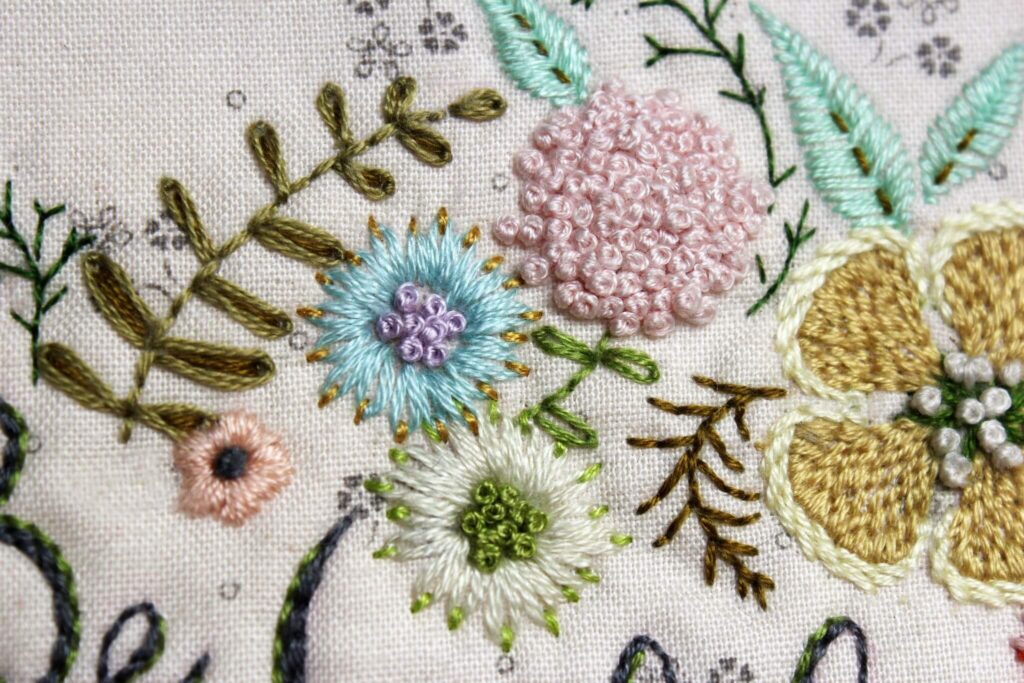
AAII work is a type of embroidery that is done by tightly stretching fabric onto a wooden frame. The crochet (needle knitting) embroidery is used for this style. It is available in different sizes 1mm , 0.8mm , 0.7mm , 0.5mm . It may also include other finishing materials such as threads like beads, sequins , other brass findings and sewn on stones.
Zardozi (Zari) Embroidery

Fashionable embroidery is made with gold thread. This type of embroidery was used to decorate the emperor, his home, elephants and horses with expensive fabric. It is important to choose the right and expensive fabrics: silk, velvet, brocade, etc. Currently, this type of carving is widely used to decorate Indian wedding dresses, blankets, pillows, curtains, tablecloths, bags and even shoes. A special hook is used to apply embroidery, which is not very simple and requires preparation. A popular pattern in this technique is the Indian cucumber, which is often used today by designers of the world’s leading brands. Check out our zari collection of exquisite bridal dresses, mehndi outfits, amazing party wears and much more.
Shisha Embroidery

Kalyan in Hindi means “small mirrors” because the main element of this embroidery is round mirrors. The history of this technique is very interesting. Purely Indian people could not afford expensive jewelry and fabrics, so they use a mirror. People broke it into small pieces, painted these pieces and sewed them onto fabric. It was believed that such embroidery could protect against evil spirits. In modern embroidery, small mirror fragments are replaced with rhinestones and sequins, which are also inexpensive. Check out our new arrivals sew-on shisha mirror , cup chain in 2mm, 3mm and metal brass sequins .
Gota Embroidery
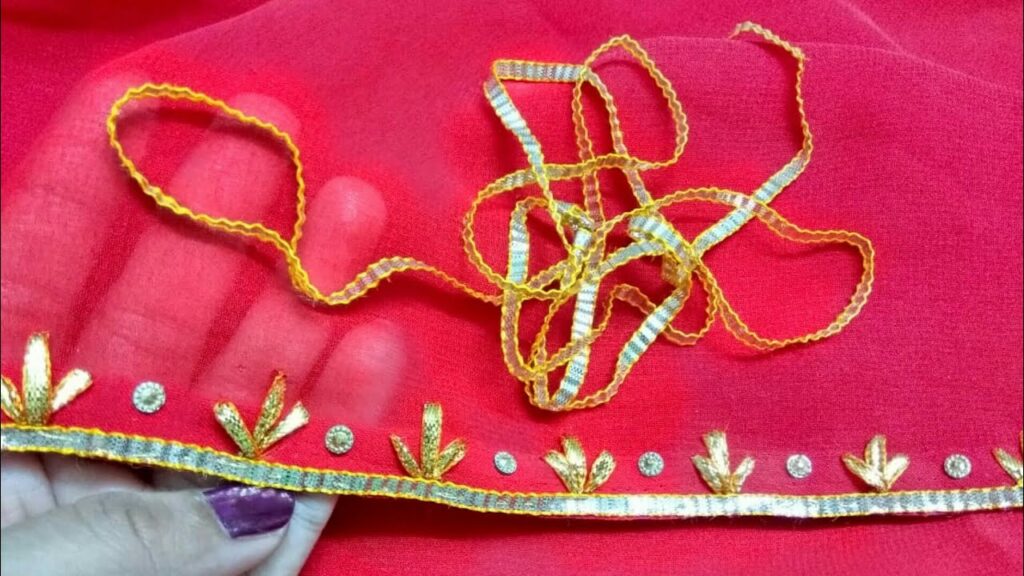
The basis of this Gota embroidery is the use of gold threads in the formal wear of women. Small pieces of Zari PEV wire on fabric to create an intricate design. The most popular theme for Gotha embroidery is birds, animals, people, which are cut and sewn to fabric. Check out our new collection of engraved Gotha laces and Gotha flowers.
Kantha (Bengal) Embroidery

Kantha embroidery is traditionally a women’s activity, girls embroidered using this technique during the rainy season, when there was no agricultural work. There were no rules for this embroidery, which allows people to create unique patterns. The stitch in the Kantha technique is the simplest – ‘forward needle’.
Other Embroidery Styles
Cross
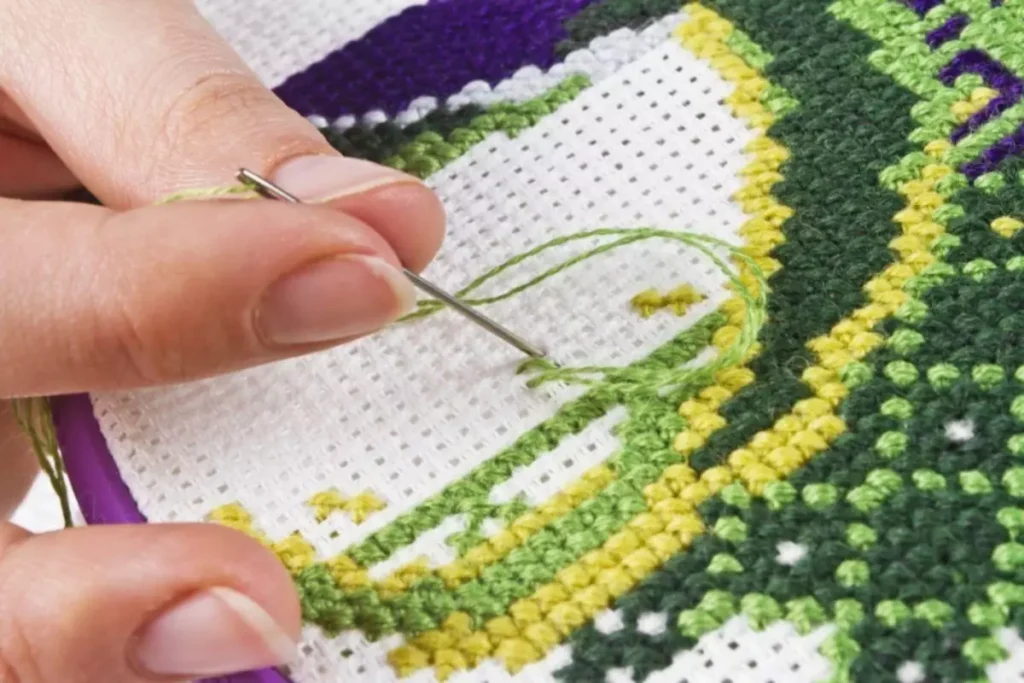
Previously, patterns were embroidered with a cross on homespun fabric. Today, not only ornaments, birds and flowers are embroidered with cross stitch. Using floss of different colors, they make pictures similar to paintings. The main thing is to choose a canvas with an image that you will then want to hang in a frame.
An embroidery pattern is a pattern divided into cells and applied to canvas. You can make it yourself, or embroider it ready-made. If the embroidery will decorate not a wall, but some product – a cosmetic bag or a backpack, it is sewn to the main fabric of the product.
Tapes
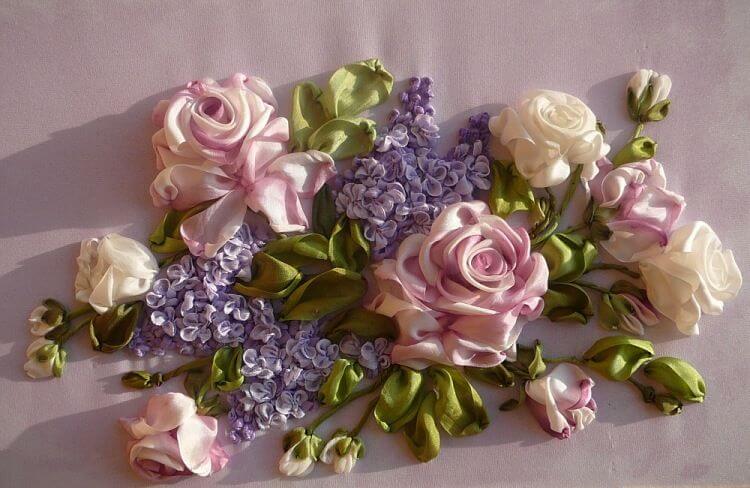
A bouquet of flowers made from satin ribbons or organza will be ready much faster than one embroidered with a cross. Naturalistic flowers can decorate a handmade bag, a blouse collar, a decorative pillow, or be placed in a beautiful frame under glass.
Surface

In this way you can create any picturesque images. Back in the Middle Ages, patient and careful craftswomen decorated home textiles and linens with multi-colored and plain embroideries. To perform embroidery, you don’t need a pattern with squares, but you can’t do without the outline of the pattern pre-marked on the fabric. A sense of color and the ability to create smooth transitions and mix threads of different colors are important. The play of light and shadow, the combination of warm and cold shades – this makes even a small image a masterpiece.
Assisi

Complex technology with an interesting history. According to legend, Italian craftswomen were inspired by the example of Arabic embroidery that Francis of Assisi brought from the Crusades and created their own technology based on it. It combines different types of embroidery: a background of muted color is used to embroider the background around the central image, which remains white. Cross stitches or its many varieties are made against the background:
- long-sided cross;
- Italian double-sided;
- Montenegrin trail;
- Holbein;
- blackwork
The finished monochrome work looks elegant and requires less time to complete it than you have to spend on polychrome embroidery.
Beadwork
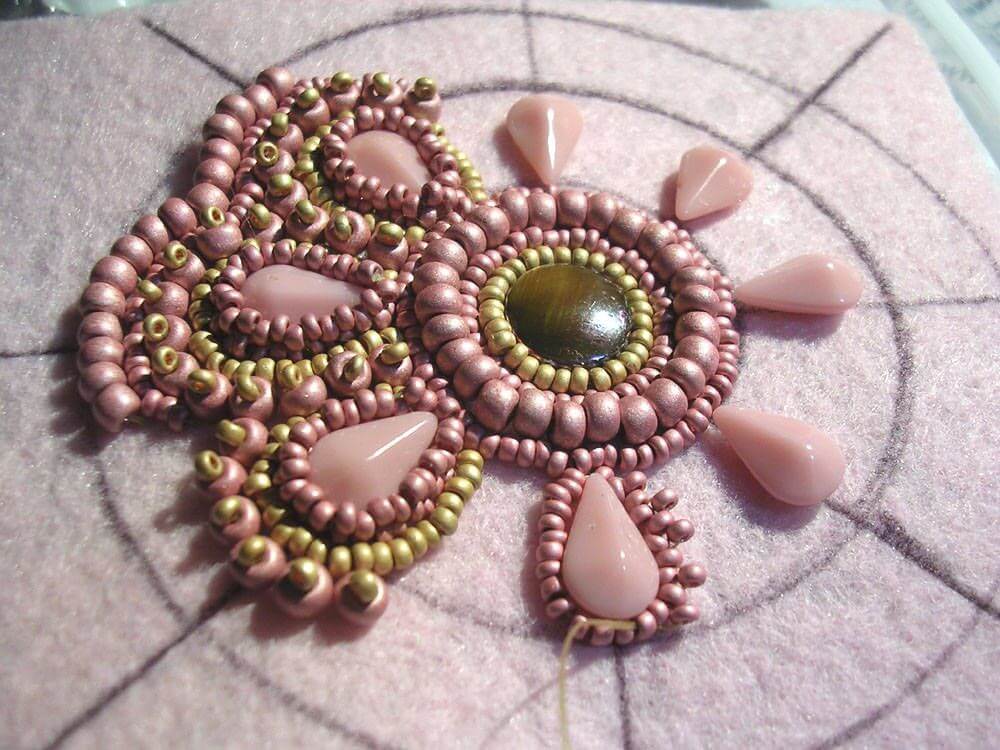
The first beads were freshwater pearls. Then multi-colored glass beads appeared. The resulting image will shimmer and shimmer. Just imagine how a beaded bird or flower will look on a velvet handbag or cosmetic bag! You can also embroider brooches and hair clips.
Machine Embroidery
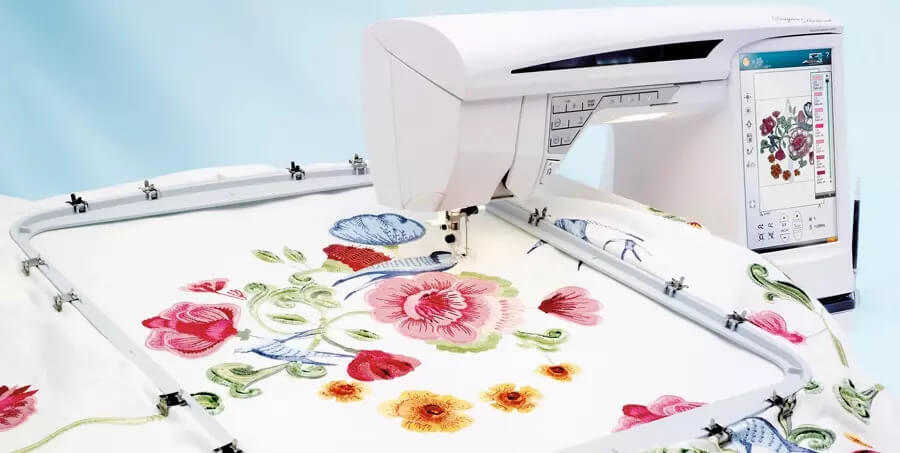
In 1830, the Frenchman Barthelemy Thimonnier designed the first sewing machine. Subsequently, she became a worthy competitor not only to seamstresses, but also to embroiderers.
Today, machine embroidery has a number of advantages over handmade work:
- fast completion of large volumes of work;
- accurate execution of the sketch an unlimited number of times;
- more durable design: a product with machine embroidery can be washed in a regular machine
- Embroidery is done on a free-running or computer embroidery machine.
- You can quickly apply a bright and durable logo or an impressive design to an apron, baseball cap, T-shirt or sweatshirt, and, most importantly, if necessary, you can easily repeat the order, or apply the same logo to another product.

